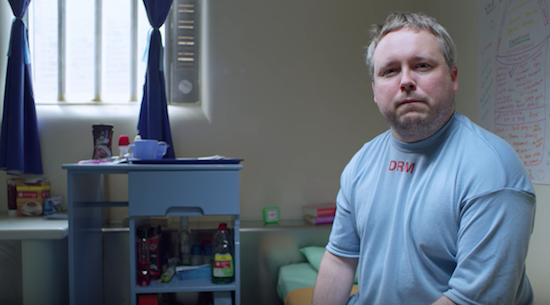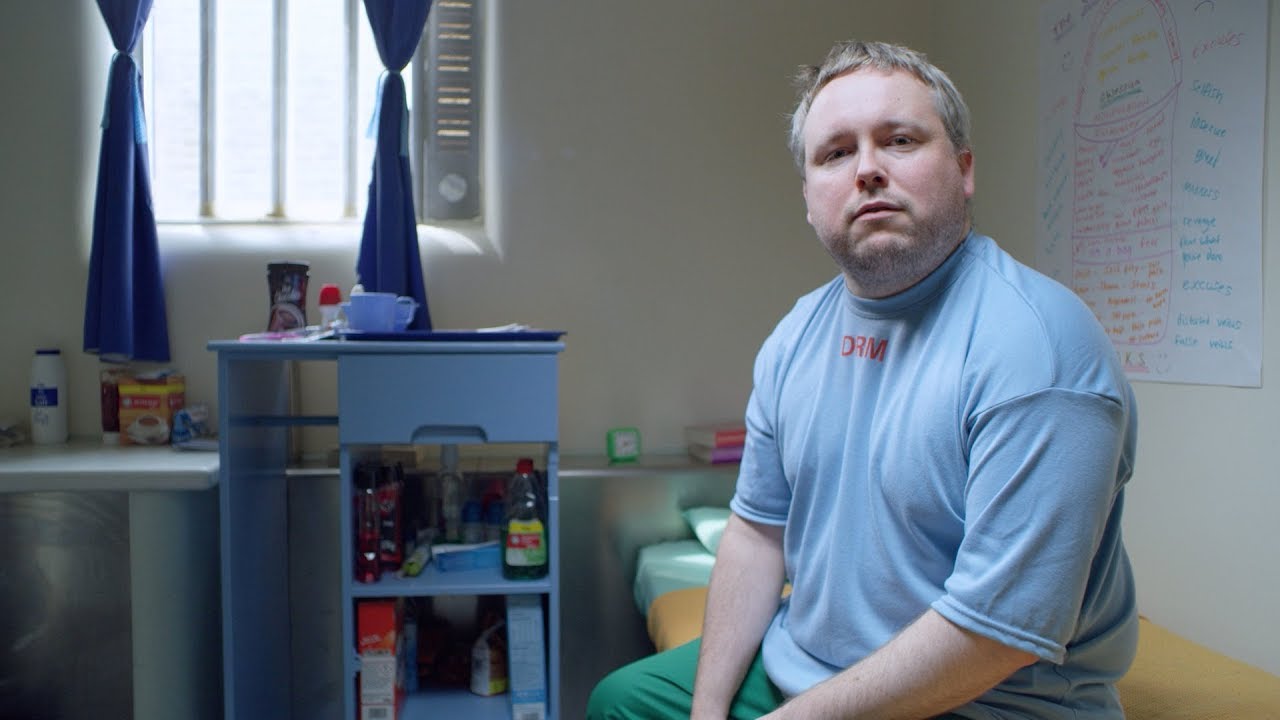At the halfway point of 2017, Richard Dawson’s Peasant topped The Quietus’ albums of the year so far list. A startlingly contemporary record that manages to eschew genre and create a new one simultaneously, it’s a release – also bolstered by 2014’s exceptional Nothing Important – that has also seen the wider world begin to wake up to the inimitable wonders of Dawson. However, before the year is out, he has even more gold to share. This comes in the form of another collaboration with the Newcastle-based artist and filmmaker, Matt Stokes, on the film This Liberty.
The film was created as part of a commissioned installation at Hexham Old Gaol, the oldest purpose built jail in the UK. It tells the stories, through song, of five people linked to the prison and Dawson has written all of the songs. Alongside Marry Waterson, Trev Gibb, George Unthanks and Dawn Bothwell, Dawson also performs one of the songs himself – ‘The Felon’s Song’. The video of which – shot in Durham HMP – premieres here.
The powerful one-take video captures an intimacy to Dawson and his words that is as unsettling as it is poignant, as his words drip with an empathy that clashes with the squalid and torrid backdrop of the tale of a young imprisoned boy. The song itself is further testament to Dawson’s natural ability to add a melodic sheen and contemporaneous edge to a style of music synonymous with the past. There are not many artists that possess the power to have you hang on every word as they sing, acapella, about a lad going to prison for nicking eggs about 700 hundred years ago. There are even fewer who can add an emotional weight and depth to that tale as mightily as Dawson does here.
Below, he elaborates on the project, the songs and his experience of spending the day in prison.
Tell us little bit about the This Liberty film.
Richard Dawson: Matt’s idea was to have five songs each sung by somebody who would have inhabited the jail in one form or the other. So you have the jailer, a poor prisoner – which is my song – a wealthier prisoner, a good samaritan and a priest. Matt was trying to present this strata of society.
The piece you sing, ‘The Felon’s Song’, is that a traditional tale or something you created for this project?
RD: Some of the songs in the film were very research-based and based on real people but this song was more general and based around research of what life would have been like as a poor prisoner in those days. I then just went from there, really, I just imagined it. A lot of these prisoners would have been in there for minor offences and the jailing system back then, between 1300-1600, if you go into jail, even for a minor offence, you have to await trial there as they only convened about once every three months or so and whatever time you spend in jail, you pay for. So people would accrue these debts, even if they had just stolen an apple or something like that. They then wouldn’t be able to pay off these debts and so they might languish in jail for a hell of a lot longer, even if they were found innocent. It’s crazy.
This song was the last to be written out of the five and I just thought about how that experience would actually be for a young person who is fairly green around the gills. He only steals some eggs in this song and the repercussions are very grave. I just thought about how frightened he would be, I mean I would be very frightened as a 36 year-old but imagine if you were going in there as a 12 or 13 year-old into a dungeon where the conditions are disgusting, unhealthy and dangerous.
Tell us about your experience of spending the day filming in Durham prison?
RD: It was kind of terrifying but totally fascinating; they have a couple of security guys geared up to take people around the jail. I was in full prison garb for the day and there was a lot of jokes about keeping me there and they pulled a prank on me: a guard that I had not seen before suddenly came into the cell and was really furious with me and screaming, "What are you doing in here?" so it was kind of terrifying but really amazing. I had some good chats with a few of the prisoners.
Did you film in someone’s actual cell?
RD: We did, yeah. It was pretty intense performance-wise because we had to get everything into a cell and get set up and then just as we were hitting a good take, we would have to clear everything out again because they were coming back for lunch – because they eat lunch in their cells there. So then we had to start the whole process again, it was quite a high pressure situation. The take you see is the only full one we managed to get.
Were you on edge at all?
RD: It’s a strange environment and part of you is on alert because you’ve seen prison movies but what’s actually really odd about it is how normal it all is.
It seems really quiet in the video too, there’s no background noise at all.
RD: We were expecting it to be noisy, that was the one thing I was a little antsy about; also how people would respond to the song and my voice, which is like a honking goose sort of a sound. Also, it’s quite a naked song because the lad is quite vulnerable, so it was a bit of a relief that people weren’t around to hear it…but also a bit of a disappointment.
So, all went to plan in the end? No escape attempts?
RD: There was no real issue on the day except for lunch. I didn’t take my prison T-shirt off and went out in the town and because the logo is on the front of the tshirt, it was peeking through under my shirt and I think there were a few phone calls placed in the coffee shop to the prison.
Did you draw any parallels from your modern day prison experience to the system of hundreds of years ago that you’re singing about? Or were you aiming to do that with the video?
RD: What we’re trying to speak to is that a lot of the elements of that situation for a young person hasn’t changed all that much. Such as why would they end up in a prison in the first place and then their situation once they’re in there and how difficult it is to get out of that system. Those things were very crucial. It’s amazing how little the core of those things has changed so it was important to have that costume and be as authentic as possible.
Is there a life for these songs beyond the film?
RD: I’ve been playing a couple of the songs on the tour, I’m very fond of the Marry Waterson one on top of the one I do. Maybe those two songs might make their way onto something in the future but who knows? It would depend on the next record I make as the albums I tend to make end up being whole pieces rather than a collection of songs.
Are you working on your next album already?
RD: I’m finishing up a Hen Ogledd album first [Dawson’s other musical project with Dawn Bothwell and Rhodri Davies]. I’m getting music together for the next album which will continue over the course of next year and then I’ll write the words at the end. So my next song album is quite a way off.
This Liberty will be screening at Hexham Old Goal until December 7. For more information, head here



